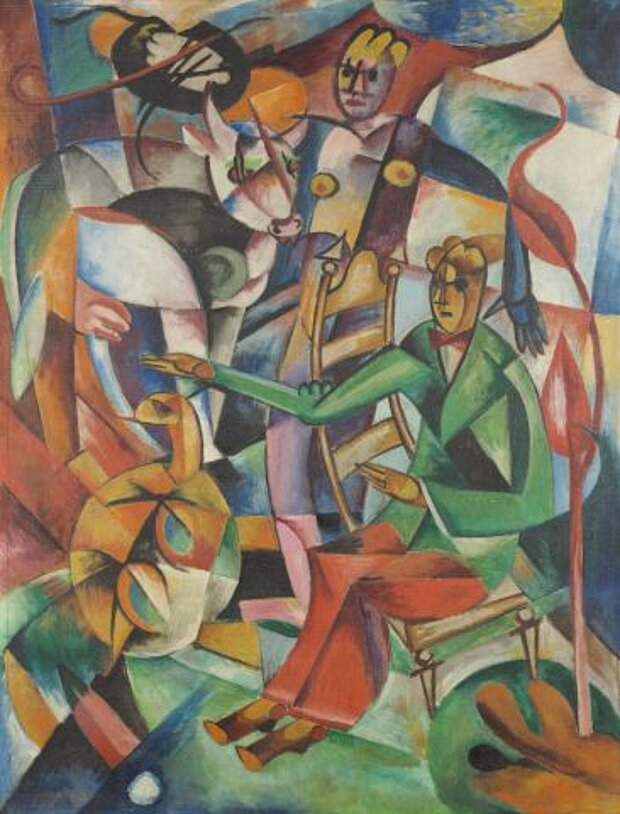
Campendonk, Heinrich
Idyll in Sindelsdorf
Idyllic Scene in Sindelsdorf
1913

© mumok
| Object description | Oil on canvas |
|---|---|
| Object category | painting |
| Material |
object:
oil paint
image carrier:
canvas
|
| Technique |
object size:
oil paintings
|
| Dimensions |
object:
weight: 14 kg
frame dimension:
height: 144,3 cm,
width: 114,4 cm,
depth: 8 cm
object size:
height: 129,5 cm,
width: 100 cm,
depth: 2,3 cm
|
| Year of acquisition | 1965 |
| Inventory number | B 110/0 |
| Creditline | mumok - Museum moderner Kunst Stiftung Ludwig Wien |
| Rights reference | Bildrecht, Wien |
| Further information about the person | Campendonk, Heinrich [GND] |
| Literature |
Der Blaue Reiter Laboratorium Moderne/Bildende Kunst, Fotografie und Film im Aufbruch Der Blaue Reiter. Die Befreiung der Farbe |
In October 1911 Franz Marc wrote to August Macke enthusing about the work of an unknown painter from Krefeld. The work was “splendid” and “strong”. That year saw Campendonk accepted into the Blaue Reiter (Blue Rider) artist group as its youngest member. Because of Franz Marc’s assiduous intercession on his behalf with the famous collector Alfred Flechtheim, Campendonk was able to move to Sindelsdorf—in Upper Bavaria—and thus to be close to Marc who was an important role model for him. The contact, engagement and exchange with Kandinsky, Macke and Marc led to works in which the formal language and subject matter of the Blaue Reiter group is unmistakable. Campendonk stated that nature was his sole source of inspiration: a way of painting that exhibited an increasing Cubist deconstruction of forms, which deliberately distanced itself from imitating nature but which nevertheless took nature as its subject. Situated in a rural environment, the depiction of the “Harmony of Creation” became his main theme in 1912-13. The work group includes “Idyll in Sindelsdorf”. Humans and animals stand close to each other in harmony. The colorful, high-contrast forms and colored areas with their accentuated contours heighten the dynamic effect of the motif towards the expressive. This stylistic device contains echoes of Robert Delauney’s Orphism or Italian Futurism. It shows the young painter’s pleasure in experimentation and an almost naïf devotion to a utopian conception of the world which would come to an abrupt end a short while later with the onset of the First World War.
© mumok – museum moderner kunst stiftung ludwig wien